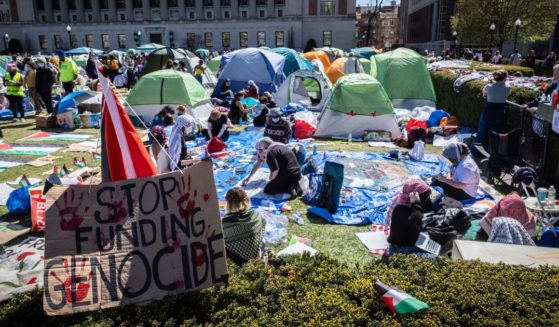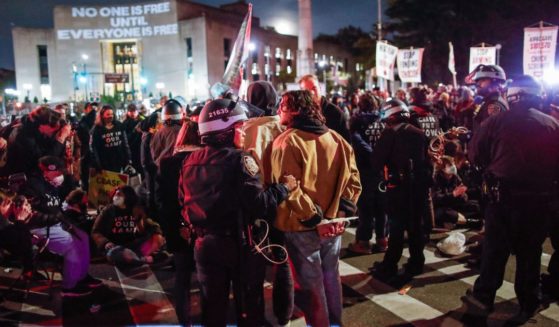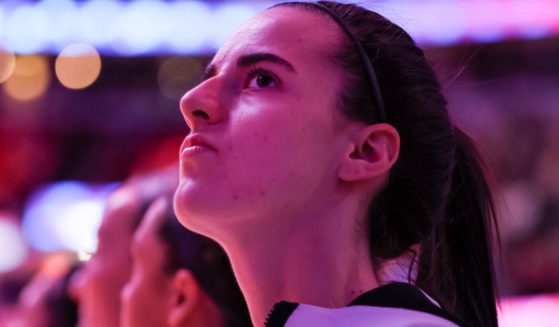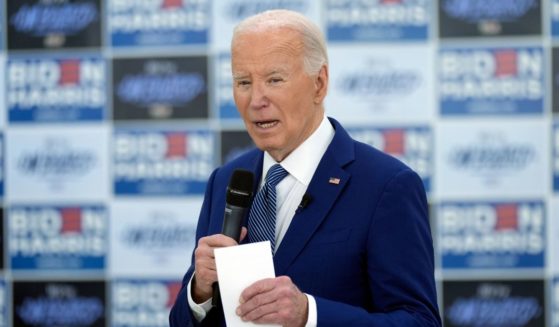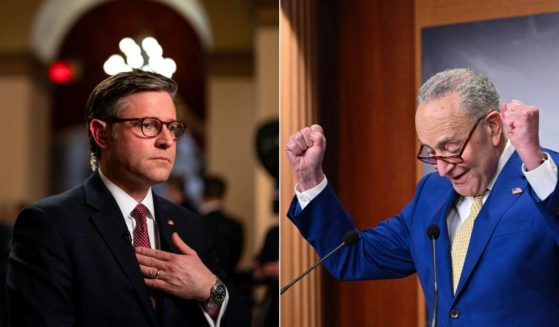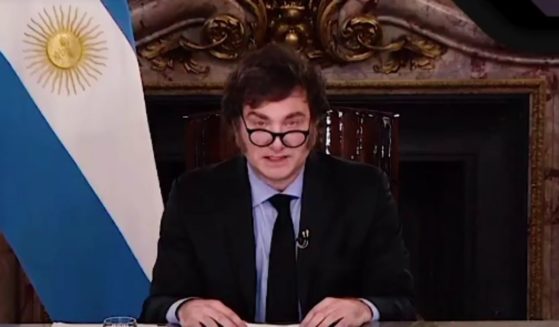University of Minnesota Treats Whiteness Like Mental Illness, Offers 12-Step Program To Beat It
Please read this paragraph and tell me that it doesn’t read like a blurb from the LinkedIn profile of a minor-league cult leader:
“In 2015, after years of struggling to navigate the role and presence of whiteness in her personal, academic, and professional journeys, Cristina developed the Model of Recovery from White Conditioning. She is grateful for all the thought leaders, healers, mentors, and humans who have shared their authentic selves with her, nurturing and challenging a pursuit of lifelong learning, innovation, and growth.”
She’s not a cult leader, however. Instead, Cristina Combs received a masters in social work from the University of Minnesota back in 2008 and, since then, “has worked as in-home family therapist, outpatient therapist, and clinical supervisor of a school-based mental health program.”
The blurbs above are part of her bio for her webinar series at the Center for Practice Transformation and the University of Minnesota’s School of Social Work and Continuing Education Series. (You can’t even really acronym that one, as CPTUMSSWCES doesn’t really help much.)
The topic is “Deconstructing & Decentralizing White-ness in Practice: A Three-Part Series,” and Part I is called “Recovery from White Conditioning: Building Anti-Racist Practice and Community.”
I’m sure what follows is was intended to be harmless as these things go, although the description of the event makes it sound like a nicer version of Synanon for extirpating racial guilt.
“The Model of Recovery from White Conditioning, a derivative work based on the 12 steps of Alcoholics Anonymous, is rooted in love and accountability,” the University of Minnesota’s website says.
“It involves white people, working in our community to transform violent legacies of whiteness into healthier, white, anti-racist community … and it requires us to have the courage to start with ourselves.
“During this webinar, we will review the 12 steps of the Model of Recovery from White Conditioning, discuss implementation lessons learned to date, and explore implications for practice in various settings. We look forward to you joining us as we call forward white people to recover and reclaim our full humanity.”
The university’s website says you can earn a continuing education credit for the the webinar. So, was it worth it? One of The College Fix’s writers sat through it so I didn’t have to, and the verdict seems to be no.
Combs began the two-hour lecture by saying: “I also want to hold that alongside the tension that, in this model, we are, in fact, centering whiteness, but we are centering it differently: to expose it, study its patterns and to transform its violent legacy.”
The goal of the lecture, however, was to “decenter whiteness.” Centering to de-center — there’s something almost vaguely Hegelian there. I don’t think that was brought up, however, even though Hegel is one of those old white men you’re kind of allowed to like these days. (I think.)
Anyhow, this was based on the 12-step Alcoholics Anonymous model, so of course there was a similar outline of how you could cure yourself from whiteness.
But first, Combs made sure you knew one of the core tenets of anti-racism: White supremacy isn’t what you think it is.
You’ve probably heard a great deal about anti-racism of late, and explaining the whole suite of beliefs it encompasses would take forever.
However, how it defines “white supremacy” is probably different than how you do. Combs noted that while people thought of the Ku Klux Klan and other such groups as being symbols of white supremacy, that’s not quite what “anti-racists” mean when they say it.
It’s not about white people being white supremacists. It’s about systems white people have constructed over the years … that engender white supremacy.
“When BIPOC [black, indigenous and people of color] activists would use the term ‘white supremacy’ to talk about the systems that needed to change and the work that white people needed to do, my instinct was to recoil. It felt like too hard or too raw of a word, and I didn’t like it. And I ultimately realized that that is my ego,” Combs said.
“Stepping into that tension and accepting my connection to white supremacy has been a freedom of sorts to show up in better alignment with my values and do the work for the rest of my life.”
That work brought forth these 12 steps:
- “We admitted that we had been socially conditioned by the ideology of white supremacy.”
- “We came to believe that we could embrace our ignorance as an invitation to learn.”
- “We developed support systems to keep us engaged in this work.”
- “We journeyed boldly inward, exploring and acknowledging ways in which white supremacist teachings have been integrated into our minds and spirits.”
- “We confessed our mistakes and failing to ourselves and others.”
- “We were entirely ready to deconstruct previous ways of knowing, as they had been developed through the lens of white supremacy.”
- “We humbly explored new ways of understanding … proactively seeking out new learning and reconstructing a more inclusive sense of reality.”
- “We committed ourselves to ongoing study of our racial biases, conscious or unconscious, and our maladaptive patterns of white supremacist thinking.”
- “We developed strategies to counteract our racial biases.”
- “We embraced the responsibility of focusing on our impact, more than our intentions, in interactions with people of color.”
- “We engaged in daily practices of self-reflection.”
- “We committed ourselves to sharing this message with our white brothers, sisters, and siblings … in order to build a supportive recovery community and to encourage personal accountability within our culture.”
Some of the work white people had to do on each of the steps is, well, predictable.
On step seven, for instance, Combs recommended that people read black racial theorists like Audre Lorde, Chimamanda Adichie and Ta-Nehisi Coates. (I’m sure her oversight of Ibram X. Kendi was just a mistake.)
On step nine, Combs said white people had to do some serious work to view people of color in a positive light. She highlighted the strategy employed by one of her members, which was to say to herself, “Hello my brother, hello my sister, hello my sibling” whenever she saw a black person. I think I’ve been able to maintain a positive image of black people without having to recite any mantra to myself — although I’m sure Combs would tell me I’m deluding herself.
And of course, there was a meme involving “The Matrix,” because of course there was. Quoth the meme: “What if I told you it’s OK to change your opinion based on new information.”
“Step six is really about just acknowledging and sitting with that,” she said.
It’s literally nothing like that, the same way that 12-step programs for whiteness aren’t — or shouldn’t be — a way to “treat” racism.
That’s because it’s not even going after racism, it’s targeting “whiteness” — and treating it as if it were a mental illness.
If there’s any way to turn people off to your message, it’s the message that their race is an original sin and needs to be dealt with as if it were an addiction.
As it stands, this doesn’t solve anything other than an exciting new role for Cristina Combs at the University of Minnesota.
Truth and Accuracy
We are committed to truth and accuracy in all of our journalism. Read our editorial standards.

